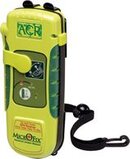That's a great list, Trace, thank you sir.
Some other Do's:
1. Do realize that back zip drysuits are as self-donning as other zipper placements. (If you can reach your valves, you can do this trick!)
.........
A couple Do Not's:
1. Don't scare Andy by changing your dive plan.
2. Don't get caught if you are DIR.







